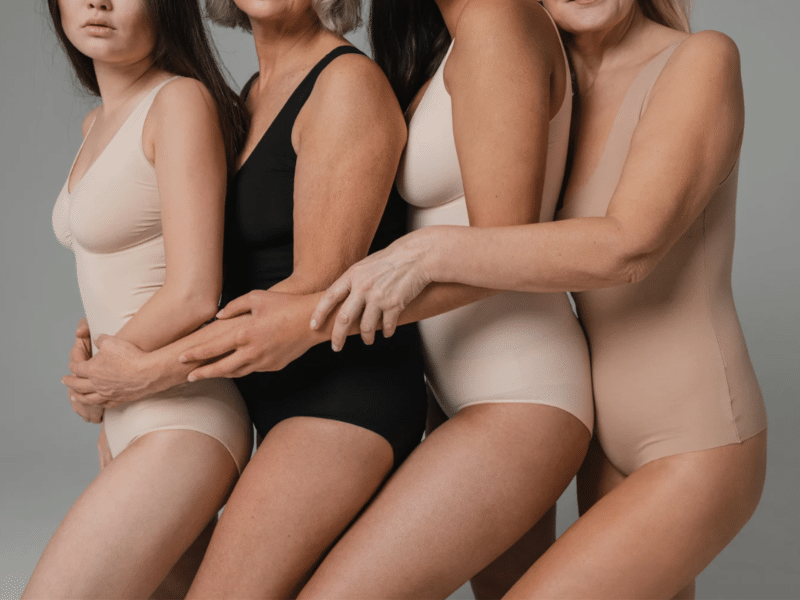Shopping is a pretty instinctive thing, right? Love it or hate it, when we’re clothes shopping we make several quick decisions on sight. We’ll judge colour, fabric, and cut in the blink of an eye. No one learns these things, they just happen. But when we’re shopping with something specific in mind it’s important to take a considered moment to make sure that what we’re spending money on is the right thing. This is especially true of shapewear, since they’re actually pretty technical pieces of garmentry!
Understanding what you’re buying
You don’t have to do a degree in control pants, don’t worry! But it is worth understanding how these bits of kit work. This will stop you from making those rookie errors that result in wasted money and a redundant piece of underwear languishing at the back of your knicker drawer!
What’s it all about?
Shapewear isn’t there to completely change your shape. Its purpose is to smooth lines and add stability to any wobbly bits! It should be structured but comfortable. The idea is for you to feel an added level of confidence in whatever occasion you’re heading towards; from a wedding to a weekly meeting.
Choosing a size
Stick to your honest size – no aspirational shopping here! Sizing down when you buy shapewear will only result in rolling waistbands, discomfort, and bumps where there shouldn’t be.
- The brand size guide is more reliable than the high street. We all know what dress size we are in our favourite shops, but these vary wildly. So once you’ve found the shapewear style that works for you, consult the size guide to get it right.
- In between sizes? Most of us are. There are also many garments, from control briefs to shaping slips, that are designed for a range of dress sizes, on a L, XL, XXL scale. For most shapewear, the most important measurement is your waist. Go from here when choosing which size is right for you.
- Measure properly. Use a flexible tape measure and make sure that it’s flat against the skin. Bend slightly to the side and where an indent appears is the right point to take the measurement. Round up to the nearest inch for the most secure fit.
- Bra sizes are also important for garments like corsets that fit and sculpt the bust. Take a fresh measurement before you buy.
Preventing slippage
Of course, choosing the right size is the most important way to make sure that your shapewear doesn’t move. There are a few other things you can do too, though, just for a bit of additional back up!
- Dry properly after a shower. Getting dressed when you’re still a bit damp can cause tight fitting clothes to move around as your skin dries and cools.
- Dressers tape is a genius bit of kit which, while it shouldn’t be relied upon, can provide a bit of extra stability.
- An anchor does what the name suggests. You can do this by choosing shapewear with straps, tucking high waisted bottoms under your bra, or even attaching it to your bra with clips.
Which solution works?
When you’re faced with a whole plethora of shapewear options, it can be a bit bamboozling! Shorts or briefs? Bodysuit or corset? Slip or cami? Often it’s really down to what you feel comfortable in and the style of outfit that you’re working with. There are a few things to remember:
- What is the event or occasion? An all day event will have different implications in terms of comfort and practicality (by which we mean loo stops!)
- What fabric is it sitting under? Tailored suits sit differently to chiffon frocks. Be conscious of whether the waistband of your briefs could clash with the line of your outfit, or if seams may appear prominent under clingy fabrics.
- Think about the risk of accidentally revealing your shapewear. Your hemline and neckline are the usual culprits, but clothes with cut outs are also a potential flash point!
The right foundation can really give an outfit the ‘wow’ factor. Or it can breathe new life into something you’ve not worn for years. That’s why we’ve taken time to curate a range that covers all the bases!
Becky is an author and copywriter who has been writing about women’s issues and underwear for several years. She also writes blogs which cover a range of topics for local businesses.

 How to choose the right control briefs for every summer occasion
How to choose the right control briefs for every summer occasion
